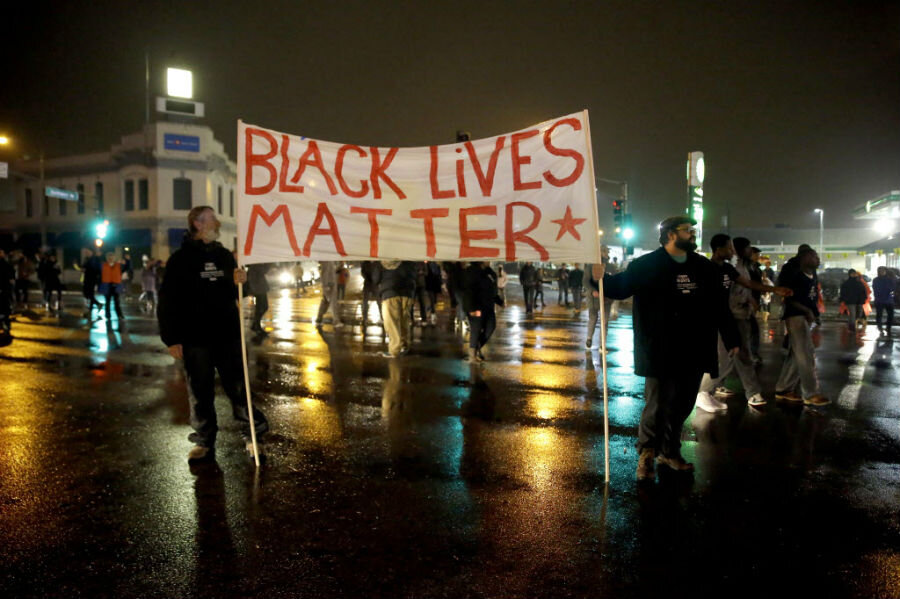Why Ferguson decision is about much more than Darren Wilson or Mike Brown
Loading...
For many black Americans across the country, a grand jury decision about whether to indict a white police officer in Missouri will be about the shooting death of Michael Brown but also about something bigger – what they see as a broader pattern of excessive use of force by police against African-American males.
The death of Mr. Brown, an 18-year-old who had recently graduated from high school, shocked the St. Louis area community of Ferguson in August and resulted in protests there and in other US cities.
Now, according to news reports Monday, a decision from a grand jury is expected to be announced tonight on whether police officer Darren Wilson will face criminal charges in the teenager’s death.
But although Brown’s death was a catalyst, those who are preparing to protest again say they’re on the march to change a culture of police bias and racial tension – a movement they say will go on whatever the outcome in Brown’s case.
As if to punctuate the point that it’s not just about one dead teen, another death of a black youth made headlines Monday: A 12-year-old boy in Cleveland was shot over the weekend by an officer as police responded to a 911 call about what turned out to be a toy handgun.
“If you look at Ferguson and the situation [in] Cleveland, they are the same in the sense that you have a police officer alleging one thing and two young black men dying before their 21st birthday," Cleveland City Councilman Zack Reed said, according to a news report on Cleveland.com.
The circumstances around both these deaths don’t appear to be clear-cut, according to news reports quoting police or witnesses.
In Brown’s case, some eyewitness say the youth had his hands up in a posture of surrender when Officer Wilson shot him. But by other witness accounts, Brown, an unarmed but large young man, was moving toward Wilson when he was shot. And Wilson himself has reportedly testified that prior to the shooting, Brown punched him numerous times through the window of Wilson’s car, after the officer asked Brown to walk on the sidewalk rather than the street.
In Cleveland, a dispatcher hadn’t told the officers that the 911 caller thought the gun was “probably fake.” And Cleveland police said the boy, Tamir Rice, pulled out a realistic-looking weapon instead of complying with a police order to put his hands up. It was an "airsoft" type pellet gun that resembled a semi-automatic handgun, police said.
The killings were tragic deaths, but the details leave open the question of whether police should be charged with crimes such as murder of manslaughter.
Protest leaders say these cases and others, though, point to the need for new policies that to rein in the use of lethal force by police. Statistically, they say, black men are much more likely to be killed by police than whites.
In one new CNN poll, a majority of Americans say they think Wilson should be charged and face trial for Brown’s death.
Separate from the St. Louis County grand jury proceedings, the FBI and US Department of Justice have been investigating the case.
Brown’s family called for protesters to mark the grand jury announcement, when it comes, with four and half minutes of silence before launching new demonstrations in the streets. That time would symbolize the 4-1/2 hours that Brown’s body lay in the street after the shooting.
In Cleveland, Councilman Reed says he hopes the city will speed up plans to equip police with body cameras – a move that could help resolve disputes about things like the use of force, as well as making officers more aware of the accountability they face.
Material from the Associated Press was used in this story.








